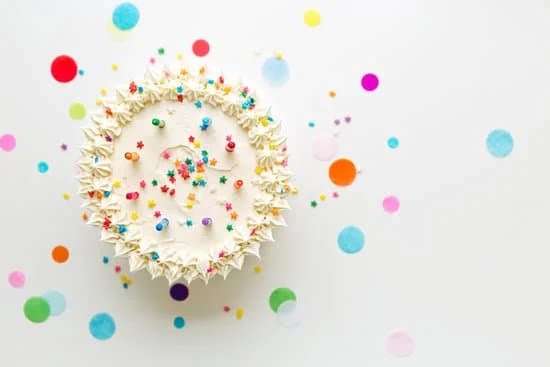Fondant has become a popular choice for cake decorating, allowing bakers to achieve smooth, flawless finishes and create intricate designs. However, one crucial aspect of working with fondant is knowing when to put the decorations on the cake. Timing plays a vital role in ensuring that fondant decorations are applied at the right moment to produce stunning results.
Before delving into the intricate details of timing, it is important to understand what fondant is and why it has gained such popularity in cake decorating. Fondant is a smooth, pliable icing made from sugar, corn syrup, and water. Its versatility and ability to hold shape make it an excellent choice for creating various designs, from simple patterns to elaborate sculptures. Fondant also provides a clean canvas for additional decorative elements such as piping or painting.
When it comes to adding fondant decorations onto a cake, timing is crucial. Applying them too early can result in smudges or distortion due to handling or the weight of other elements like buttercream icing. On the other hand, waiting too long may make it difficult for the fondant to adhere properly or lead to cracking if the surface dries out. Success lies in finding that delicate balance between working efficiently while ensuring optimal conditions for your masterpiece.
In this article, we will delve into the intricacies of timing with fondant decorations on cakes. We will discuss the importance of cake stability before applying fondant and provide tips on how to ensure your cakes have a sturdy foundation.
Additionally, we will explore steps for preparing your cake surface for fondant and techniques such as crumb coating and applying a smooth buttercream layer. By following these guidelines and understanding how different factors affect timing decisions, you can master the art of placing fondant decorations flawlessly onto your cakes.
Importance of Cake Stability
A stable cake foundation is crucial before adding fondant decorations. When it comes to cake decorating, stability is key, as a wobbly or uneven cake can cause the fondant decorations to crack or collapse. Therefore, it is important to ensure that your cake is sturdy and level before moving forward with the fondant application.
Tips on Ensuring Cake Stability
There are several tips and techniques that can help you achieve a stable cake foundation for your fondant decorations:
- Leveling the Cake: Start by trimming off any uneven tops or domed areas of the cake layers. This will ensure that the surface of your cake is flat and even.
- Proper Support: Depending on the size and weight of your cake, it may be necessary to use dowels or straws as support between each layer. These supports will provide stability and prevent the tiers from sinking into each other.
- Crumb Coat: Applying a crumb coat of buttercream frosting to your cake acts as a foundation for the fondant and helps seal in any loose crumbs. This will create a smooth surface for the fondant to adhere to.
- Chilling the Cake: After applying the crumb coat, chill your cake in the refrigerator for at least 30 minutes. This will firm up the buttercream and make it easier to handle when adding the final layer of frosting or applying the fondant.
- Leveling Again: Once chilled, check if any areas have become uneven during the chilling process and make any necessary adjustments by gently pressing them down with a spatula or your hands.
By following these tips, you can ensure that your cake has a sturdy foundation before adding fondant decorations, allowing them to stay intact throughout the entire design process.
Preparing the Cake for Fondant
Before applying fondant decorations to a cake, it is crucial to prepare the cake surface properly. This ensures that the fondant adheres smoothly and flawlessly to the cake, resulting in a professional-looking finish. Here is a step-by-step guide on how to prepare your cake for fondant decorations:
- Crumb coating: Start by applying a thin layer of buttercream or ganache all over the cake. This acts as a “glue” between the cake and the fondant, preventing crumbs from showing through and providing a smooth surface for the fondant to adhere to.
- Leveling: It is essential to have a level cake before adding fondant decorations. Trim off any uneven or domed parts of the cake using a serrated knife or a cake leveler. A flat and even surface ensures that your fondant decorations will sit straight and balanced on top of the cake.
- Applying a smooth buttercream layer: After crumb coating and leveling, apply another layer of buttercream or ganache to create an even smoother surface for the fondant. Use an offset spatula or bench scraper to spread the buttercream thinly and evenly across all sides of the cake.
By following these steps, you can ensure that your cake is well-prepared for fondant decorations, resulting in a polished final product.
- Crumb coating.
- Leveling.
- Applying a smooth buttercream layer.
Assessing Cake Moisture and Freshness
When it comes to adding fondant decorations to a cake, one important factor to consider is the moisture content and freshness of the cake. The moisture level of the cake plays a crucial role in how long your fondant decorations will last and how well they adhere to the surface of the cake.
If the cake is too dry, the fondant may crack or become brittle. On the other hand, if the cake is too moist, it can cause the fondant to become soft and lose its shape.
To ensure that your cake has the right amount of moisture, it is important to properly bake and store it. Here are some pointers:
- Bake your cake correctly: Follow your recipe carefully and avoid overbaking or underbaking your cake. Overbaked cakes tend to be drier while underbaked ones can be overly moist.
- Store your cake properly: After baking, make sure to wrap your cooled cakes tightly in plastic wrap or foil to prevent them from drying out. Storing them in an airtight container can also help maintain their moisture.
- Use simple syrup or flavored syrups: If you find that your cake is on the drier side, you can brush a simple syrup or flavored syrup onto each layer before adding filling or covering with buttercream icing. This will add moisture without compromising the integrity of the fondant.
- Avoid refrigerating decorated cakes: Refrigeration can cause condensation to form on your fondant decorations, leading to a loss of shape and texture. If possible, keep decorated cakes in a cool room instead.
By assessing the moisture content and freshness of your cake before applying fondant, you can ensure that your decorations not only look beautiful but also have excellent longevity.
| Pointer | Description |
|---|---|
| Bake your cake correctly | Follow your recipe carefully and avoid overbaking or underbaking your cake. Overbaked cakes tend to be drier while underbaked ones can be overly moist. |
| Store your cake properly | After baking, make sure to wrap your cooled cakes tightly in plastic wrap or foil to prevent them from drying out. Storing them in an airtight container can also help maintain their moisture. |
| Use simple syrup or flavored syrups | If you find that your cake is on the drier side, you can brush a simple syrup or flavored syrup onto each layer before adding filling or covering with buttercream icing. This will add moisture without compromising the integrity of the fondant. |
| Avoid refrigerating decorated cakes | Refrigeration can cause condensation to form on your fondant decorations, leading to a loss of shape and texture. If possible, keep decorated cakes in a cool room instead. |
Choosing the Right Time
Choosing the right time to put fondant decorations on a cake is crucial for achieving optimal results. There are several factors that need to be considered in order to determine the best timing. These factors include the flavor of the cake, type of icing used, and the climate in which the cake will be displayed.
Cake Flavor
The flavor of the cake is an important factor when deciding when to apply fondant decorations. Some flavors, such as lemon or fruit-based cakes, tend to be moister and may require more time for the flavors to meld together before adding fondant. On the other hand, denser cakes like chocolate or carrot cakes can typically handle fondant sooner.
Icing Type
The type of icing used on the cake also affects when fondant decorations should be added. Buttercream icing needs time to set and crust before applying fondant, so it is important to consider this when determining timing. If using ganache or cream cheese frosting, they need to be fully chilled and set before adding fondant.
Climate
The climate in which the cake will be displayed plays a significant role in timing as well. In hot and humid environments, it is important to wait until just before serving or displaying the cake before adding fondant decorations. This helps prevent any potential melting or sagging of the decorations due to heat and humidity.
It is essential to carefully consider these factors when choosing the right time to add fondant decorations on a cake. By taking into account the flavor of the cake, type of icing used, and climate conditions, you can ensure that your fondant creations will not only look beautiful but also maintain their structural integrity throughout your event.
Timing With Multi-Tier Cakes
When it comes to working with multi-tier cakes and fondant decorations, timing becomes even more crucial. The process of constructing a multi-tier cake requires careful planning and coordination, especially when it comes to applying fondant decorations. Each tier must be stacked securely and leveled before adding the decorations, ensuring that the cake remains stable throughout the entire process.
One important consideration when timing fondant decorations on multi-tier cakes is the order in which you apply them. It is generally recommended to start with the bottom tier and work your way up. This allows for easier access and maneuverability while adding the decorations. Additionally, working from bottom to top helps prevent any damage or smudging of previously applied decorations.
Coordinating the timing of fondant decor on each tier also involves taking into account the drying time. Fondant needs time to dry and set, especially if intricate designs or sculpted shapes are involved. It is important to plan ahead and give yourself enough time for each tier’s fondant to dry completely before moving on to the next one. This will ensure that all your hard work in creating beautiful fondant decorations stays intact.
Another aspect of timing with multi-tier cakes is accounting for any potential mishaps or adjustments that may be needed during assembly. If you encounter any issues such as uneven stacking or gaps between tiers, it is essential to address them before proceeding with adding the fondant decorations. This might require some last-minute adjustments or modifications, but it will ultimately contribute to a more visually appealing and structurally sound cake.
Advanced Techniques
Adding complex fondant decorations to a cake can elevate its appearance to a whole new level. These advanced techniques, such as creating 3D sculptures or delicate sugar flowers, require precision and careful timing to achieve the desired results. Timing plays a vital role in working with these complex decorations, as certain steps may need to be done in advance or at specific intervals. Here are some tips on adding complex fondant decorations to your cake:
- Planning ahead: Before you begin working on your complex fondant decorations, it is important to plan out your design and create a timeline. Consider the drying time required for each element of your decoration, as well as any additional materials you may need. This will help you allocate enough time for each step and ensure that everything comes together seamlessly.
- Working in stages: Complex fondant decorations often involve multiple components that need to be assembled together. To avoid overwhelming yourself and ensure that each component sets properly, break up the process into stages. Start with elements that take longer to dry, such as 3D structures or intricate figures, before moving on to more delicate details like sugar flowers.
- Proper storage and handling: As you work on your fondant decorations, it is important to store them correctly to maintain their shape and freshness. Keep finished elements in an airtight container or wrap them carefully in plastic wrap until they are ready to be placed on the cake. Handle delicate decorations with clean hands or small tools to prevent any damage.
- Coordinating timing with the cake: When adding complex fondant decorations to a cake, it is crucial to consider the overall timeline of your cake preparation. Ensure that your cake layers are chilled and properly stacked before placing any fondant pieces on top. Coordinate with the baking and assembly of the cake itself so that everything is ready at the right time.
By following these tips and mastering the art of timing with complex fondant decorations, you can create stunning and intricate cake designs that are sure to impress. Remember to practice and experiment to find your perfect timing for beautiful cake creations. With patience and skill, you can achieve professional-looking results that will leave everyone in awe of your cake decorating abilities.
Troubleshooting and Prevention
When it comes to adding fondant decorations to a cake, timing is crucial. Adding them too early or too late can lead to various problems and challenges. In this section, we will discuss some common issues that can arise when applying fondant decorations at the wrong time and provide solutions and preventive measures to avoid potential disasters.
One common problem that can occur when adding fondant decorations too early is bulging or sagging. This happens when the moisture from the cake seeps into the fondant, causing it to become soft and lose its shape. To prevent this, make sure your cake is completely cool before applying fondant. If the cake is still warm, the heat can create condensation beneath the fondant and result in bulging.
Another tip is to check the humidity level in your kitchen. High humidity can also cause moisture buildup on the surface of your cake, which can lead to bulging. Consider using a dehumidifier or air conditioning if necessary.
On the other hand, if you add fondant decorations too late, they may not adhere properly to the cake. Fondant needs a slightly tacky surface to stick well, so if the buttercream underneath has dried too much or formed a crust, it will be difficult for the fondant decorations to stay in place. To prevent this issue, try lightly misting your buttercream with water just before placing fondant on top. This will create a bit of moisture for better adhesion.
Another problem that may arise when timing with fondant decorations is cracking or drying out. Fondant can dry out quickly if exposed to air for too long or in a dry environment. To avoid this, keep your fondant decorations covered with plastic wrap until you are ready to apply them onto the cake. Additionally, consider adding small amounts of shortening or glycerin while working with your fondant to keep it pliable and prevent cracking.
By troubleshooting and taking preventive measures, you can avoid these common issues when working with fondant decorations. Remember that practice makes perfect, so don’t be discouraged if you encounter challenges along the way. Experiment with different timing techniques to find what works best for your specific cake creations.
| Problem | Solution/Prevention |
|---|---|
| Bulging or sagging fondant decorations | – Allow the cake to cool completely before applying fondant
|
| Fondant decorations not adhering properly | – Mist buttercream lightly with water just before placing fondant
|
| Cracking or drying out of fondant decorations | – Keep fondant decorations covered with plastic wrap until ready to apply
|
Conclusion
In conclusion, mastering the art of timing when it comes to applying fondant decorations on cakes is crucial for achieving beautiful and flawless results. Fondant has become increasingly popular in cake decorating due to its versatility and smooth finish. However, timing is key in ensuring that the fondant adheres properly and retains its freshness.
Throughout this article, we have explored various aspects of timing with fondant decorations. We learned about the importance of cake stability and how to ensure a sturdy foundation before adding fondant. We also discussed the steps for preparing the cake surface and assessing its moisture content. Understanding these factors will help you make informed decisions about when to apply your fondant.
When choosing the right time to add fondant decorations, several factors should be considered, such as the cake flavor, icing type, and climate. Different situations may require different guidelines, but by experimenting and practicing, you can find the perfect timing that works best for your specific circumstances.
Lastly, we discussed more advanced techniques for adding complex fondant decorations and addressed troubleshooting common problems that can arise from improper timing. By following these tips and suggestions, you will be well-equipped to prevent potential disasters when working with fondant.
Mastering the art of timing with fondant decorations takes practice and experience. As you continue honing your skills, don’t be afraid to experiment, try new techniques, and push your boundaries. With patience and perseverance, you will undoubtedly achieve beautiful cake creations that leave a lasting impression on everyone who sees them.
Frequently Asked Questions
How far in advance can I make fondant decorations for a cake?
Fondant decorations for a cake can be made several weeks in advance, depending on the complexity of the design and the specific conditions in which they are stored. Generally, fondant decorations have a long shelf life as long as they are stored properly.
It is recommended to make the decorations at least a week before the cake is needed to allow sufficient time for any mistakes or adjustments. To extend their shelf life, store the fondant decorations in an airtight container away from direct sunlight and extreme temperature fluctuations.
How far in advance can you put fondant decorations on buttercream?
Fondant decorations can typically be placed on freshly made buttercream immediately after it has been spread onto the cake. The moisture in buttercream provides enough stickiness to adhere the fondant pieces securely.
However, if you plan to place them on already crusted buttercream or refrigerated cakes, it is best to moisten the back of each decoration slightly with water or edible glue before placing them on top. This will help ensure better adhesion and prevent them from sliding off.
Will fondant decorations stick to buttercream?
Yes, fondant decorations can stick well onto buttercream icing when applied correctly. As mentioned earlier, fresh buttercream provides enough moisture for the fondant to grip onto it firmly. It’s important to press the decorations gently but firmly onto the buttercream surface, ensuring full contact between the two elements.
If any parts of the decoration do not stick well initially, you may lightly dampen those areas with water or edible glue and press again until they adhere properly. Overall, when properly prepared and applied, fondant decorations should adhere nicely to buttercream without any issues.

Welcome to our cake decorating blog! My name is Destiny Flores, and I am the proud owner of a cake decorating business named Cake Karma. Our mission is to provide delicious, beautiful cakes for all occasions. We specialize in creating custom cakes that are tailored specifically to each customer’s individual needs and tastes.





